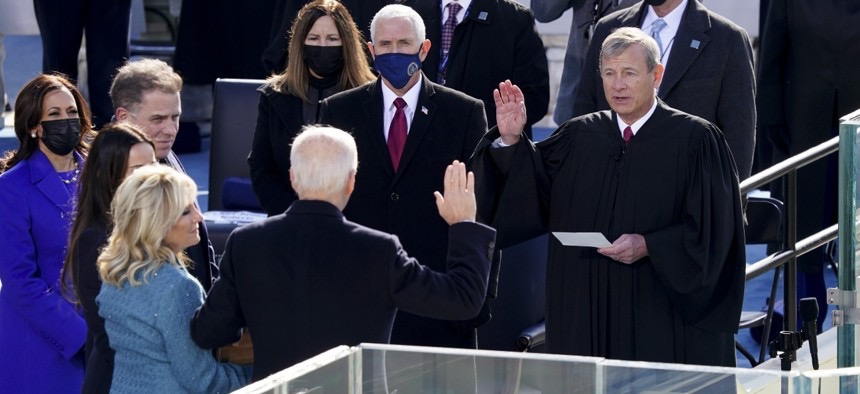
The Media's Role in Protecting Democracy Amid Sensationalism
News coverage of the 2024 presidential transition of power has devolved into a battleground of partisanship as the Trump administration gets ready to assume power once more. Political rivalry, staff nominations, and a dramatic shift in foreign and domestic policy are the main concerns for most mainstream news outlets. However, the media is failing in their duty to educate the public about the democratic and practical need for a peaceful transition of power by putting drama and “clickbait” ahead of democracy. In the United States government, the transfer of presidential power is the most important event. It establishes the tone for the next government, guarantees continuity, and shows how resilient democratic institutions can be. Journalists must move away from sensationalism and toward substance to support democracy better.
Professional influences on news, especially market pressure, determine how presidential transitions are covered. There is tremendous pressure on journalists and editors to focus on stories that receive consumer engagement, which frequently means putting more emphasis on conflict and controversy than on in-depth descriptions of the transition process. Instead of describing the credentials of appointees or their jobs, CNN published an article on Thursday, November 14th detailing the controversy of Trump's cabinet choices, concentrating on divisive headlines to induce emotion. "Why Trump is trying to outrage Washington with his controversial Cabinet picks". Because this type of reporting puts more emphasis on emotional appeal than on in-depth research, readers receive a narrow view of the topic. According to Mass Media and American Politics, the need to accommodate audience preferences frequently results in an exaggerated and simplified depiction of political events, compromising the media's function as a public educator.
The absence of various viewpoints in presidential transition coverage is another important issue. News organizations frequently ignore the opinions of people who will be most affected by the policies of the next administration, often favoring the views of influential voices, such as party leaders, the House of Representatives, and the Senate. This strategy marginalizes common citizens by limiting the scope of discussion and supporting a top-down narrative. Mainstream media outlets continue to extensively report the bipartisan response from political leaders regarding the Trump administration's proposed tax adjustments. Still, overall the discussion overlooks how small company owners and public sector workers are bracing for any policy changes. The National Public Radio's story on local community responses to planned education reforms, on the other hand, included teachers, parents, and students, providing a more informative and balanced viewpoint.
The public is not only misinformed by sensational news, but it is also underprepared to comprehend the importance of a presidential shift. A sizable percentage of Americans frequently misunderstand the fundamental duties of government, particularly those of federal agencies, according to Pew Research Center surveys conducted this election season. This information gap can be exacerbated or closed in large part due to the media. For instance, according to a Pew survey conducted during the Obama-to-Trump transition in 2016, many Americans were not aware of the legal procedures governing the handover of power, including the General Services Administration's role in facilitating the process. These gaps are still mostly the same in 2024. People become disengaged from one of the most basic democratic procedures when coverage concentrates on political infighting instead of these processes.
To effectively support democracy, journalists need to reevaluate how they report on presidential transitions. They must first give top priority to informative journalism that breaks down the mechanics and ramifications of the shift. This entails outlining the roles of important appointees, the rationale behind executive orders, and the importance of collaboration between departing and new governments. Second, a wider variety of views, particularly those from impacted areas, should be amplified by the media. Lastly, to empower individuals to distinguish between sensationalism and factual news, journalists should work with civic organizations to advance media literacy. The media has the power to create a better-educated voter, which will in return strengthen our American democracy.
Post a comment